Jeongjae Lee
CSIT-Free Downlink Transmission for mmWave MU-MISO Systems in High-Mobility Scenario
Sep 19, 2025Abstract:This paper investigates the downlink (DL) transmission in millimeter-wave (mmWave) multi-user multiple-input single-output (MU-MISO) systems especially focusing on a high speed mobile scenario. To complete the DL transmission within an extremely short channel coherence time, we propose a novel DL transmission framework that eliminates the need for channel state information at the transmitter (CSIT), of which acquisition process requires a substantial overhead, instead fully exploiting the given channel coherence time. Harnessing the characteristic of mmWave channel and uniquely designed CSIT-free unitary precoding, we propose a symbol detection method along with the simultaneous CSI at the receiver (CSIR) and Doppler shift estimation method to completely cancel the interferences while achieving a full combining gain. Via simulations, we demonstrate the effectiveness of the proposed method comparing with the existing baselines.
Two-Timescale Channel Estimation for RIS-Aided Near-Field Communications
Jan 06, 2025



Abstract:In this paper, we investigate the channel estimation problem in reconfigurable intelligent surface (RIS)-aided near-field communication systems, where the extremely large number of RIS elements imposes considerable pilot overhead and computational complexity. To address this, we employ a two-timescale channel estimation strategy that exploits the asymmetric coherence times of the RIS-base station (BS) channel and the User-RIS channel. We derive a time-scaling property indicating that for any two effective channels within the longer coherence time, one effective channel can be represented as the product of a vector, referred to as the small-timescale effective channel, and the other effective channel. By utilizing the estimated effective channel along with processed observations from our piecewise beam training, we present an efficient method for estimating subsequent small-timescale effective channels. We theoretically establish the efficacy of the proposed RIS design and demonstrate, through simulations, the superiority of our channel estimation method in terms of pilot overhead and computational complexity compared to existing methods across various realistic channel models.
Near-Field LoS/NLoS Channel Estimation for RIS-Aided MU-MIMO Systems: Piece-Wise Low-Rank Approximation Approach
Oct 17, 2024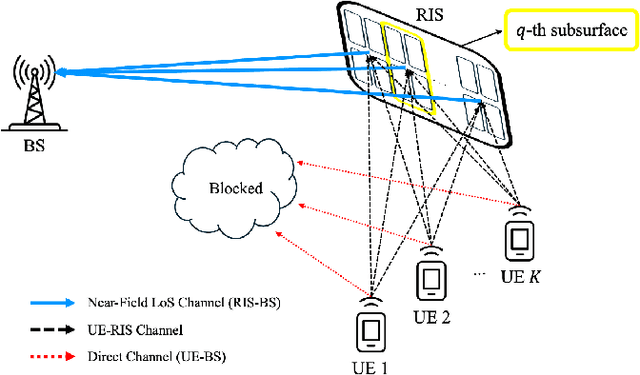
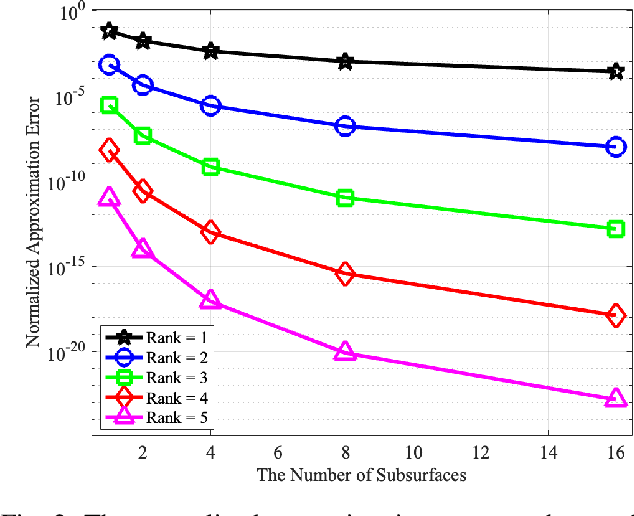
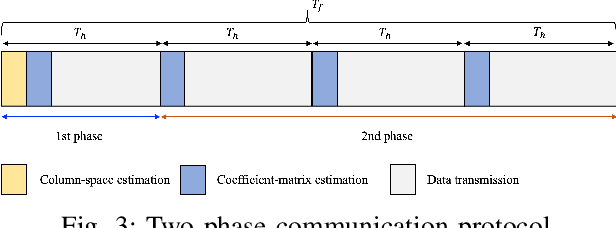
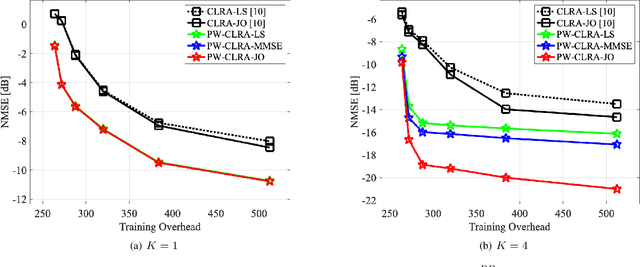
Abstract:We study the channel estimation problem for a reconfigurable intelligent surface (RIS)-assisted millimeter-wave (mmWave) multi-user multiple-input multiple-output (MU-MIMO) system. In particular, it is assumed that the channel between a RIS and a base station (BS) exhibits a near-field line-of-sight (LoS) channel, which is a dominant signal path in mmWave communication systems. Due to the high-rankness and non-sparsity of the RIS-BS channel matrix in our system, the state-of-the-art (SOTA) methods, which are constructed based on far-field or near-field non-LoS (NLoS) channel, cannot provide attractive estimation performances. We for the first time propose an efficient near-field LoS/NLoS channel estimation method for RIS-assisted MU-MIMO systems by means of a piece-wise low-rank approximation. Specifically, an effective channel (to be estimated) is partitioned into piece-wise effective channels containing low-rank structures and then, they are estimated via collaborative low-rank approximation. The proposed method is named PW-CLRA. Via simulations, we verify the effectiveness of the proposed PW-CLRA.
Statistical Analysis by Semiparametric Additive Regression and LSTM-FCN Based Hierarchical Classification for Computer Vision Quantification of Parkinsonian Bradykinesia
Mar 31, 2024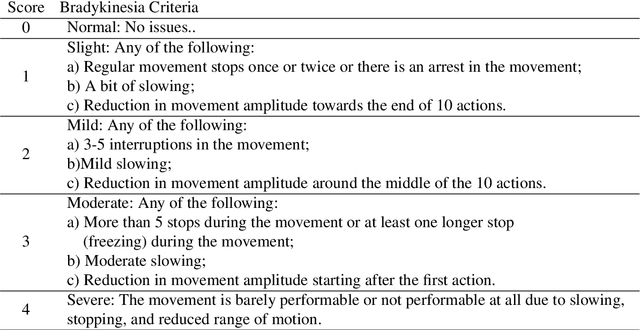

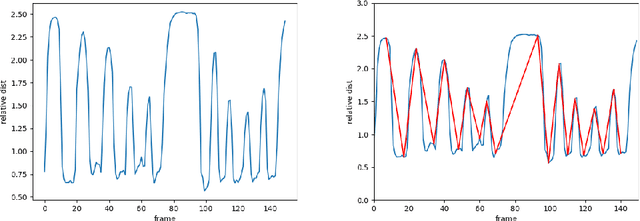
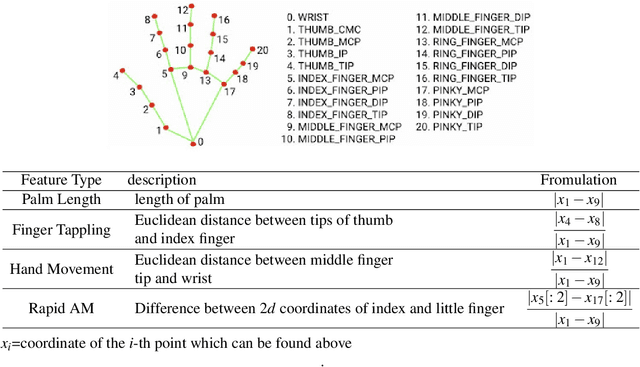
Abstract:Bradykinesia, characterized by involuntary slowing or decrement of movement, is a fundamental symptom of Parkinson's Disease (PD) and is vital for its clinical diagnosis. Despite various methodologies explored to quantify bradykinesia, computer vision-based approaches have shown promising results. However, these methods often fall short in adequately addressing key bradykinesia characteristics in repetitive limb movements: "occasional arrest" and "decrement in amplitude." This research advances vision-based quantification of bradykinesia by introducing nuanced numerical analysis to capture decrement in amplitudes and employing a simple deep learning technique, LSTM-FCN, for precise classification of occasional arrests. Our approach structures the classification process hierarchically, tailoring it to the unique dynamics of bradykinesia in PD. Statistical analysis of the extracted features, including those representing arrest and fatigue, has demonstrated their statistical significance in most cases. This finding underscores the importance of considering "occasional arrest" and "decrement in amplitude" in bradykinesia quantification of limb movement. Our enhanced diagnostic tool has been rigorously tested on an extensive dataset comprising 1396 motion videos from 310 PD patients, achieving an accuracy of 80.3%. The results confirm the robustness and reliability of our method.
Asymptotically Near-Optimal Hybrid Beamforming for mmWave IRS-Aided MIMO Systems
Mar 14, 2024Abstract:Hybrid beamforming is an emerging technology for massive multiple-input multiple-output (MIMO) systems due to the advantages of lower complexity, cost, and power consumption. Recently, intelligent reflection surface (IRS) has been proposed as the cost-effective technique for robust millimeter-wave (mmWave) MIMO systems. Thus, it is required to jointly optimize a reflection vector and hybrid beamforming matrices for IRS-aided mmWave MIMO systems. Due to the lack of RF chain in the IRS, it is unavailable to acquire the TX-IRS and IRS-RX channels separately. Instead, there are efficient methods to estimate the so-called effective (or cascaded) channel in literature. We for the first time derive the near-optimal solution of the aforementioned joint optimization only using the effective channel. Based on our theoretical analysis, we develop the practical reflection vector and hybrid beamforming matrices by projecting the asymptotic solution into the modulus constraint. Via simulations, it is demonstrated that the proposed construction can outperform the state-of-the-art (SOTA) method, where the latter even requires the knowledge of the TX-IRS ad IRS-RX channels separately. Furthermore, our construction can provide the robustness for channel estimation errors, which is inevitable for practical massive MIMO systems.
Channel Estimation for Reconfigurable Intelligent Surface Aided mmWave MU-MIMO Systems : Hybrid Receiver Architectures
Jan 13, 2024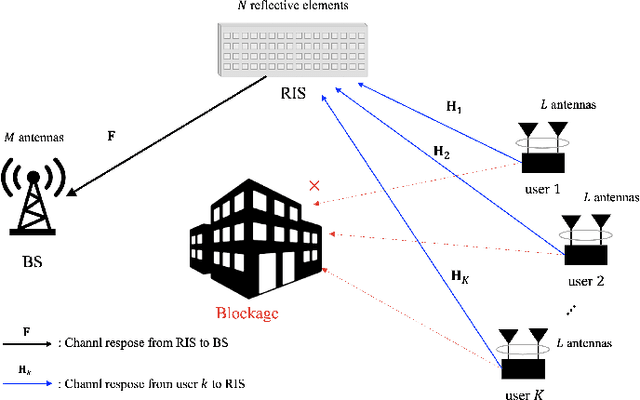



Abstract:Channel estimation is one of the key challenges for the deployment of reconfigurable intelligence surface (RIS)-aided communication systems. In this paper, we study the channel estimation problem of RIS-aided mmWave multi-user multiple-input multiple-output (MU-MIMO) systems especially when a hybrid receiver architecture is adopted. For this system, we propose a simple yet efficient channel estimation method using the fact that cascaded channels (to be estimated) have low-dimensional common column space. In the proposed method, the reflection vectors at the RIS and the RF combining matrices at the BS are designed such that the training observations are suitable for estimating the common column space and the user-specific coefficient matrices via a collaborative low-rank approximation. Via simulations, we demonstrate the effectiveness of the proposed channel estimation method compared with the state-of-the-art ones.
 Add to Chrome
Add to Chrome Add to Firefox
Add to Firefox Add to Edge
Add to Edge